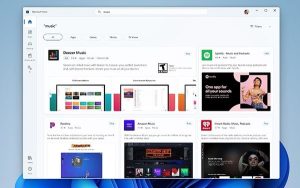— August 14, 2019
Affiliate marketing, once eulogized, is experiencing a renaissance. This entrepreneurial marketing channel allows publishers to team up with advertisers in low-risk, transparent, and performance-based partnerships. E-commerce businesses use affiliate marketing—now worth an estimated $ 5 billion in the U.S. alone—alongside other major paid online marketing channels, including email, display, search, and social.
In the affiliate marketing model, publisher businesses attract web visitors who are looking for a particular product (say, a baby stroller or a dress) and link them to e-commerce businesses who sell those products. Advertisers (i.e. the e-commerce businesses) pay publishers based on the cost-per-action (CPA) pricing model. Publishers are rewarded for sending a sale-generating consumer to an advertiser by being paid a share of the profit earned by the advertiser for the sale.
Innovative publisher businesses of all sizes and types—digital content owners, news and media outlets, incentive and comparison-shopping sites, social influencers, and retargeting and remarketing technologies—are moving toward content monetization through affiliate marketing. In doing so, they interact with affiliate networks, which act as brokers that manage the publisher/advertiser relationships and which provide core technologies to both parties.
With countless affiliate networks available and with the average publisher working with six (or far more!) affiliate networks, understanding the functionalities of all tools in the affiliate marketing ecosystem is a critical step toward effective management of any affiliate program. Publisher-facing tools are investments in resources designed to help your affiliate program flourish. Such tools exit to streamline work practices, save time, and help publishers maximize their advertiser or affiliate network relationships.
Finding the right tool is essential—for your business flow, for your budget, and for your affiliate management goals. In evaluating the value proposition of each, you’ll consider the same parameters you would for any business service. What ROI does it provide? Will it facilitate cost savings elsewhere, such as staff time, software, or overhead costs? Is a free trial available? What is the term of commitment (whether via a SaaS or on-prem model)? What support is available?
Beyond price, other parameters are important when evaluating publisher-facing tools. Publishers looking to begin, expand, streamline, or customize their affiliate marketing programs should consider how each of these four parameters fits with their affiliate marketing plans:
1. Network Integrations
Working with a single affiliate network can get complicated; working with multiple networks is head-spinning. Yet the average publisher is working with six—and larger publishers often work with 12, 15, or more. When you begin working with any publisher-facing tool, it’s imperative that it connects with the affiliate networks properly. Effective network integrations should be straightforward and easy to set up, even by non-technical staff. When evaluating a publisher tool, consider how many networks it supports, how long it takes to set up an integration, whether any networks are integrated into your key territories, and how frequently the service will connect to the networks to fetch data.
Amazon Associates—the biggest affiliate program in the world—is impossible to ignore. Some content publishers rely on Amazon for more than 90% of their sales. More broadly, Amazon dominates with an approximate 15% share of commission in U.S. affiliate marketing. Being able to integrate and work with it is a de facto requirement for any publisher solution.
2. Time-Saving Features
How much time will this tool save you? What will it help you accomplish? These answers will vary depending on the types of solutions you’re considering and the types of services the tool provides. You may find time savings within features like reporting and data aggregation. If you are working with 6-15 affiliate networks and can automate network transactions, time-savings may be exponential. Solutions that handle data consolidation, unified reporting, and link building and management can save approximately 3,000 hours of staff time annually.
3. Level of Control
Broadly, publisher-facing tools create efficiency and save time for small teams. To accomplish this, different tools run on different business models. For example, some link automation services create monetizable affiliate links on-the-fly; this may be valued by publishers who want to be relatively hands-off with their affiliate marketing program, while it may not be the right fit for larger or more hands-on teams. Select the tool that strikes the right balance between automation and control. Evaluate which tasks the tool automates; what tasks your team will still have the option to perform manually; and which tools are available based upon the plan you purchase.
4. Customization
Many publishers want to track specific metrics in their affiliate campaigns. This may include variables about campaign-level reporting or functionality like Google Analytics packages. You may have the need to add custom variables to affiliate links. Even if reporting is the primary functionality you’re looking for, evaluate the link creation and management functionality to understand how this will drive and support the reporting features you want.
Digital & Social Articles on Business 2 Community
(23)







